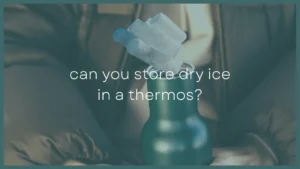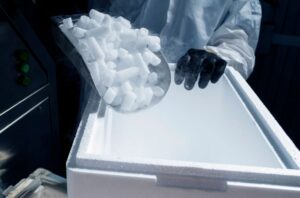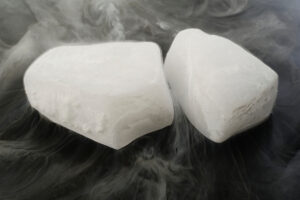As a cooler reviewer and outdoor enthusiast a big topic of conversation is dry ice. It's commonly used to keep food frozen in coolers but it has many other uses such as for shipping cold goods, making halloween fog or carbonating drinks.
Dry ice can be really handy and also very fun to use however most people don't know a lot about dry ice and people have a lot of questions about how you can and can't use dry ice.
Below I've compiled some of your most frequently asked questions about dry ice and provided you with a short a succinct answer. If you have any more questions to add to this list let us know.
Can Dry Ice Be Used In a Refrigerator?
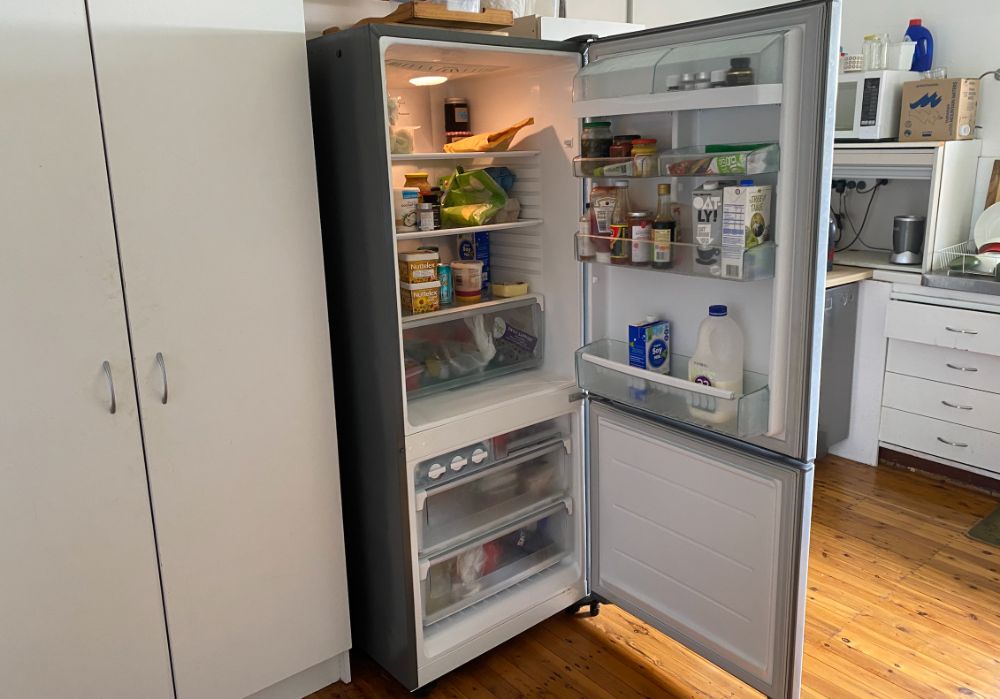
Dry ice can be used in a refrigerator to keep food and other perishables cold when power is out or the fridge is broken. Make sure to place it on a shelf and not in direct contact with the walls. You should not put dry ice in a fridge that is turned on, the cold of the dry ice will mess with the thermostat and can sometimes break the thermostat, evaporator, motors, wires or compressor.
This is because at -109.3°F/-78.5°C dry ice is going to make your refrigerator much colder than it normally would be and can even cause the refrigerant to freeze over.
When using dry ice in a refrigerator place it on a high shelf (as cold air sinks) and don't use too much dry ice, just enough to keep your fridge cold. Store excess dry ice in a high quality cooler (Yeti coolers can store dry ice).
When using dry ice anywhere inside, including your refrigerator make sure the room is well ventilated by opening up a window. Carbon dioxide gas from dry ice can reduce oxygen in the room and cause asphyxiation and death if you aren't careful. But when well ventilated it poses no threat.
Click here to learn more about using dry ice in your fridge or freezer.
How Long Does Dry Ice Last In a Refrigerator?
Dry ice will last approximately 12-24 hours in a refrigerator for every 5-10 lbs used. However, it can last up to 3 days if used in large amounts and wrapped in newspaper, cardboard or towels to slow sublimation.
How long your dry ice lasts depending on how much dry ice you use, the size of your fridge and how much food/drink you are trying to keep cold. Small quantities of dry ice will disappear quickly whereas larger blocks will last longer.
When using dry ice in a refrigerator (especially one that is turned off due to power outages or issues with the fridge) you can simply think of your refrigerator as one big cooler.
A fridge is basically a big sideways cooler with a compressor that blows cold air into it and takes out the warm air. So when switched off it simply turns into a large insulated box. Putting dry ice in your fridge is similar to putting it in a cooler.
How To Make Dry Ice Last Longer In My Fridge/Freezer
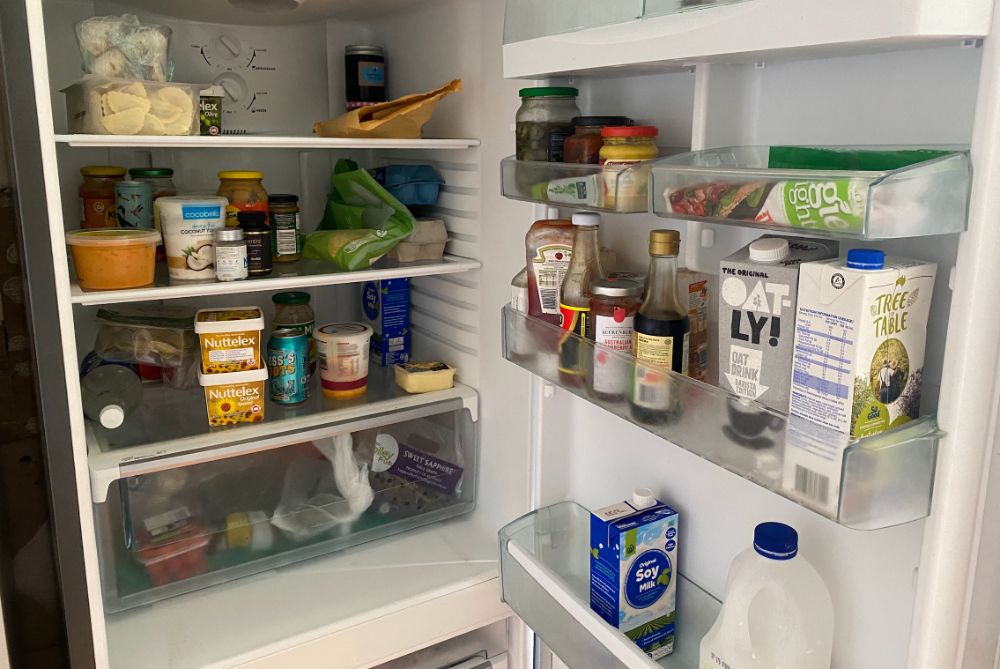
To make dry ice last longer in your fridge/freezer use larger blocks of dry ice and wrap it in newspaper, cardboard or towels to insulate it and stop it from disappearing as quickly. Open your fridge or freezer as little as possible to avoid losing the cold air and introducing warm air which sublimates the dry ice faster.
Will Dry Ice Ruin a Freezer?
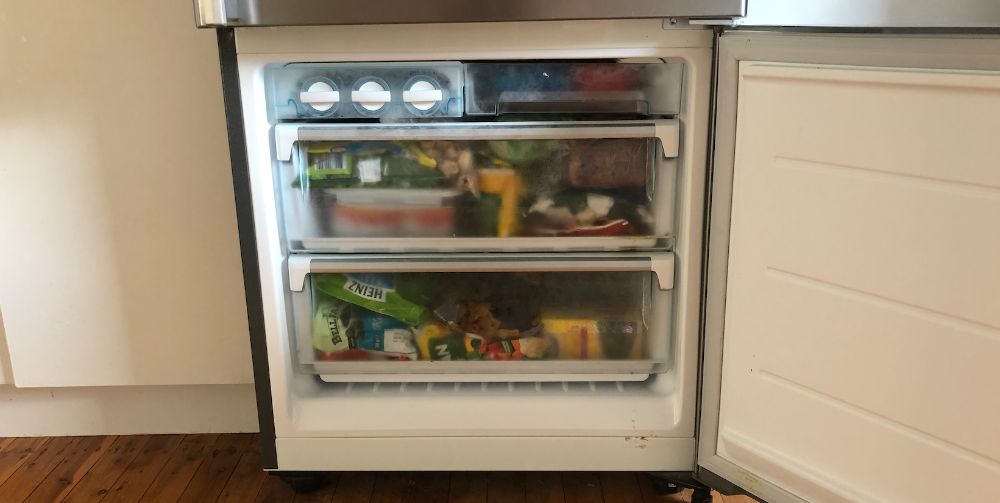
Dry ice can potentially ruin your freezer however when used properly it rarely does. In some circumstances excessive cold of the dry ice can break the thermostat, evaporator, motors, wires or compressor. To avoid this wrap the dry ice in newspaper or a towel and ensure it never touches the walls of your freezer.
By doing this you should ensure that the intense cold of the dry ice won't damage any key components of your freezer and will simply work to keep your frozen items cold and frozen.
A freezer will not keep dry ice from sublimating/melting as it's not cold enough. What will happen is the dry ice will make your freezer so cold that it'll trip the thermostat and the compressor will turn off. Once the dry ice is all gone and your freezer warms up again it will turn back on.
Can Dry Ice Burn You?

Within just 1-2 seconds dry ice can burn your skin and within a few seconds it can freeze the skin and tissue beneath the skin causing frostbite. For this reason it's very important to wear gloves and safety equipment whenever handling dry ice.
Can You Touch Dry Ice?
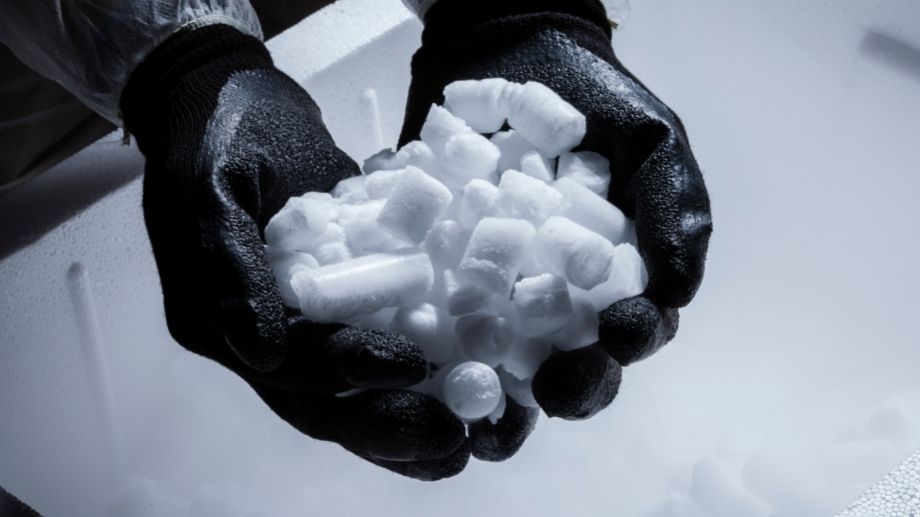
Touching dry ice is NOT recommended as it can cause frostbite however you can touch dry ice for extremely short periods of time.
To touch dry ice make sure your hands are completely dry and quickly move it between each hand holding it for less than a second at a time. Ideally you should always use gloves when handling dry ice.
If you hold dry ice for an extremely short period of time it shouldn't cause any damage to your skin. However, there is always the chance that it could cause burns or frostbite even for extremely short periods of time so touching dry ice is not recommended
Can You Use Dry Ice Indoors?
It is safe to use dry ice indoors as long as the area you are using the dry ice in is well ventilated. Open windows and doors to allow fresh air in otherwise the buildup of CO2 gas can cause asphyxiation.
Where possible it's good to use dry ice outside especially when disposing of dry ice. Dry ice is made from frozen carbon dioxide which turns to gas as it sublimates. It's important to use dry ice in well ventilated areas so the excess carbon dioxide gas can escape and be replaced with fresh air that is safe to breathe.
Is It Ok To Eat Dry Ice?
It is NOT ok to eat dry ice. Even in small doses it can burn the skin in your mouth, esophagus and stomach and even cause frostbite. The expanding gas could also rupture your stomach and cause internal bleeding or cause overexposure of CO2.
There is a video from Cody's Lab of him actually eating small amounts of dry ice and he seems to be undamaged. It's important to note he did this whilst also drinking water which should help the dry ice to sublimate faster and not be in contact with his skin for very long.
Despite him doing this it is definitely NOT something you should try at home and the risks far outweigh the rewards.
Is Dry Ice Toxic? Is Dry Ice Toxic To Breathe?
Dry ice is not toxic of poisonous. It is made from CO2 which is in the air we breathe and commonly in soft drinks. In large quantities the CO2 gas coming off dry ice can displace oxygen in the air causing headaches, nausea and asphyxiation.
Whenever you're working with drey ice it's extremely important that you do it in a well ventilated area. Open doors and windows so ensure a constant flow of fresh air.
While not toxic dry ice is extremely cold at −109.2°F/-78.5ºC and it can burn the skin if it is in contact with it for more than 1-2 seconds.
Carbon dioxide is NOT listed on ACS's list of known or probable carcinogens and serves important physiological functions in humans.
More details on the toxicity of dry ice
Can You Put Dry Ice In a Ziplock Bag?
If you put dry ice in a sealed ziplock bag it will inflate the bag with gas until the bag pops. Add water into the ziplock bag will speed up the process causing the bag to pop faster. If you put dry ice in a ziplock bag and allow the air to vent it will be fine and shouldn't break the bag.
Can You Put Dry Ice in Soda?
If you put dry ice in soda it will causes the carbonated beverage to fizz everywhere making a huge mess, similar to when you shake a bottle and then open it.
If you put dry ice in a soda bottle and close the lid the pressure will build until the bottle eventually explodes. This is known as a dry ice bomb and can be very dangerous if they explode in your hand.
Below you can see exactly what happens when someone put dry ice into a bottle of coke.
What Happens If Dry Ice Touches Food?
If dry ice touches food it will cause the food to freeze, often very quickly. It is still safe to eat food that has touched dry ice as dry ice is non-toxic
Can You Transport Dry Ice In a Car?
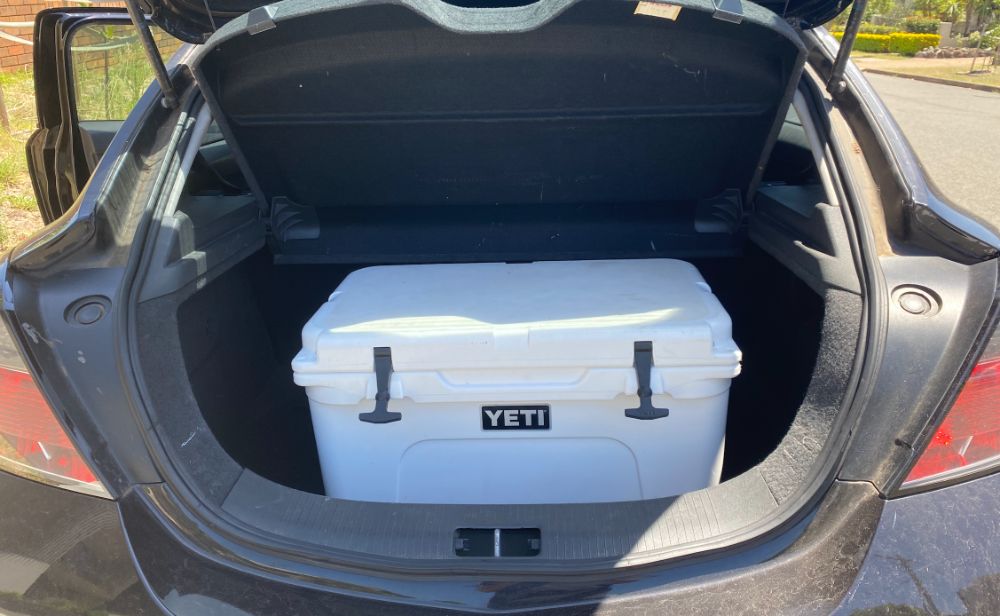
When transporting dry ice in a car you MUST leave the windows open and ensure good ventilation at all times. Otherwise the CO2 gas can displace oxygen and cause asphyxiation and even death like it did to one elderly woman.
However, if you drive with the windows open and good air flow it is very safe to drive with dry ice. Dry ice is regularly used when shipping products and in transport and dry ice can last days when shipping. But it's important that drivers are aware of the dangers of dry ice and ventilate their vehicles accordingly.
Can You Cut Dry Ice?
Dry ice is very brittle and breaks easily and it is possible to cut. Commercially they cut dry ice using a band saw but you can cut dry ice at home by taking a cerated knife and cutting a small incision around the dry ice, then hit the knife with a hammer to break the dry ice into pieces.
Most people opt for breaking up dry ice with a hammer rather than cutting it into perfectly shaped pieces. Hitting dry ice with a hammer causes it to shatter into more useable chunks. Just make sure you're wearing safety goggles when doing this as dry ice can be very dangerous if it gets into your eye.
Below you can see them cutting dry ice in a commercial factory using a band saw.
Can Dry Ice Explode In A Cooler?
Some people think that dry ice has the potential to make a cooler explode, especially a high end cooler with a freezer grade gasket. But is this actually true?
Dry ice will NOT make a cooler explode. No coolers are completely airtight and once pressure builds up from the dry ice gap it will escape through the rubber gasket on the lid of the cooler.
You won't be able to build up enough pressure in a cooler to make it explode with dry ice unless you engineer the cooler to be completely airtight and fix the lid into place with something extremely strong.
Regardless it's a good idea to leave the bottom drain plug open a little to allow excess CO2 gas to escape and avoid any pressure building up inside your cooler. You wouldn't want your Yeti cooler to explode.
Will Dry Ice Damage A Yeti or Other Cooler?

Dry ice will not damage a Yeti cooler or other cooler. Yeti coolers are made from polyethylene plastic and polyurethane foam with regular coolers being made from polypropylene plastic and polystyrene foam all of which can handle the cold temperatures of dry ice without breaking.
There is a very slight chance the outer shell of a cooler make crack from dry ice, however this is very unlikely and most coolers are stated to be dry ice compatible.
If you want to be extra safe it's a good idea to place cardboard down before your dry ice so the dry ice never directly touches the walls of the cooler. This will protect your cooler agains the most extreme temperatures and decrease the chances of any cracking occurring.
Learn more about what Yeti coolers are made of or what regular coolers are made of.
Does Dry Ice Crack Plastic?
Most plastic is unlikely to crack or break from coming in contact with dry ice. However, dry ice is so cold that it will make plastics more brittle and likely to crack when experiencing impacts and quick changes in temperature can also cause the plastic to crack.
But you should be able to put dry ice in a cooler of plastic container or even in a plastic bag without any real issues. It's heat you have to be more careful about as this can melt and deform the plastic.
You want to avoid plastic dry ice in a sealed plastic container. The dry ice will let off gas and pressures can build up which can lead to the plastic container exploding which can be quite dangerous.
However, dry ice will not damage a plastic container by itself. To be extra careful wrap your dry ice in newspaper, cardboard or a towel so it doesn't come in direct contact with the plastic. This will also help the dry ice to last a lot longer than it otherwise would.
Can You Put Dry Ice In Tupperware?
You can safely put dry ice in tupperware containers however the ice will release CO2 gas which needs room to escape. Do not put dry ice in an airtight tupperware container as the pressure will build until the lid pops off of the container explodes.
If you're using a tupperware container to transport dry ice just make sure you pop the lid a little bit so the extra gas has room to escape and pressure doesn't build.
The dry ice will super cool the plastic container and it make it more brittle so be extra careful with your container as impact can more easily cause it to shatter. Wrap your dry ice in newspapers or a towel so it doesn't come in direct contact with the tupperware.
What Is The Fog You See Around Dry Ice?
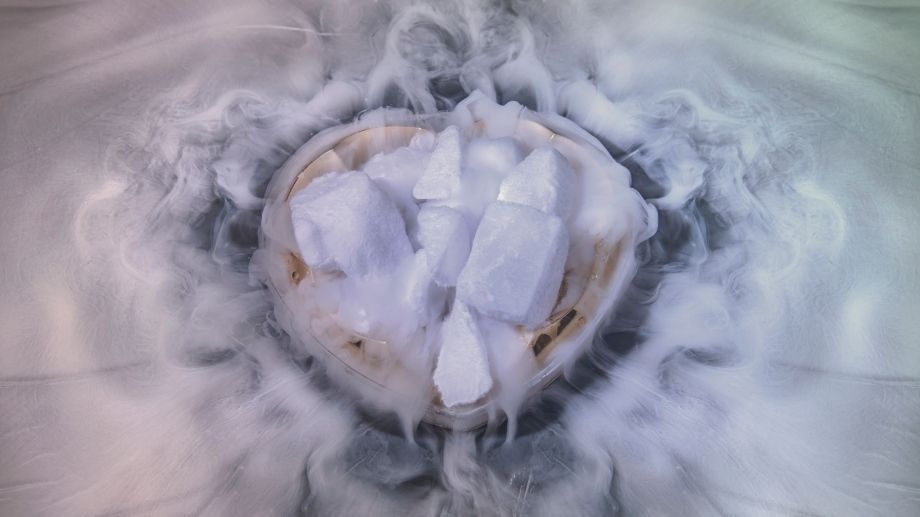
The fog you see around dry ice isn't from the dry ice itself but is actually condensed water vapor from the air around the dry ice. The moist air is cooled and forms fog, much like how clouds are formed. This condensed air is colder and denser than the surrounding air which is why the fog falls and stays near the ground.
This is also why placing dry ice in warm water creates so much fog. There is a lot fo moist air and water vapor above the warm water. When you place dry ice in the water
The fog you see around dry ice isn't from the dry ice itself. It's actually condensed water vapor from the air above the dry ice. This is why dry ice placed in warm water creates so much fog – the warm air on top of the water condenses into fog and then falls down as it is colder and denser than the surrounding air.
This is why putting dry ice in warm water creates so much fog. It both speeds up the sublimation and provides lots of warm moist air which the cold CO2 gas can condense into fog.
What Happens If You Put Hot/Boiling Water or Dry Ice?
When you place dry ice in hot or boiling water the dry ice begins to quickly sublimate (or turn to gas). This gas escapes out the top of your bucket of water where it hits the air and causes the moisture in the air to condense into fog which then falls to the ground.
The water itself will also become colder through this process and if you have enough dry ice the water will eventually begin to freeze.
Once the water gets cold enough the air above the water will not longer be as moist and the fog will begin to stop. Eventually ice will form and the dry ice will turn the water into solid ice until it has completely sublimated away.
Why Does Water Boil With Dry Ice?
If you've ever popped dry ice into water you've likely seen it bubbling away like the water is boiling. But dry ice is cold so how on earth is the water boiling?
Dry ice does not make water boil. The bubbles you see in the water are made from CO2 gas coming off the dry ice. At room temperature dry ice turns directly from a solid into a gas and placing dry ice in water speeds up this process making it look like the water is boiling.
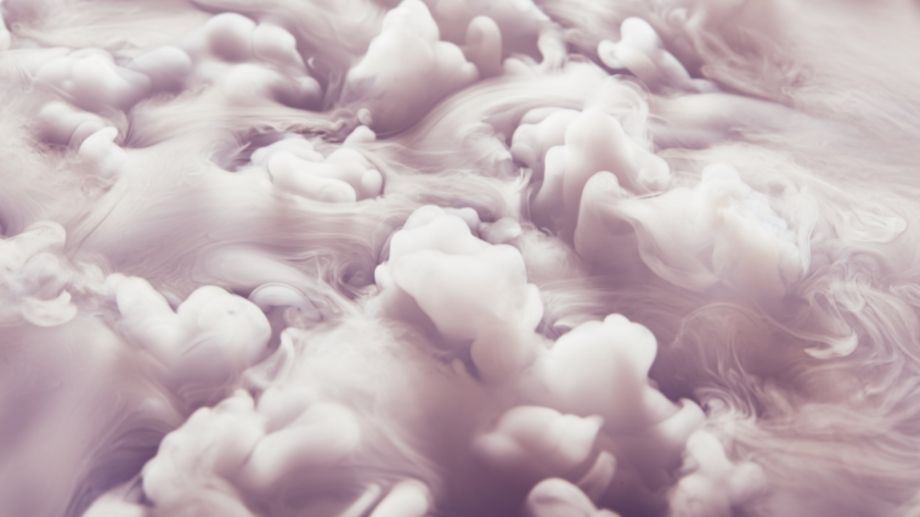
However, the water is not boiling and the CO2 gas coming off the dry ice is actually very cold. This cold CO2 gas cools the moisture in the air above the water making it condense (much like clouds do) and turn into a fog.
What Is The Smoke From Dry Ice?
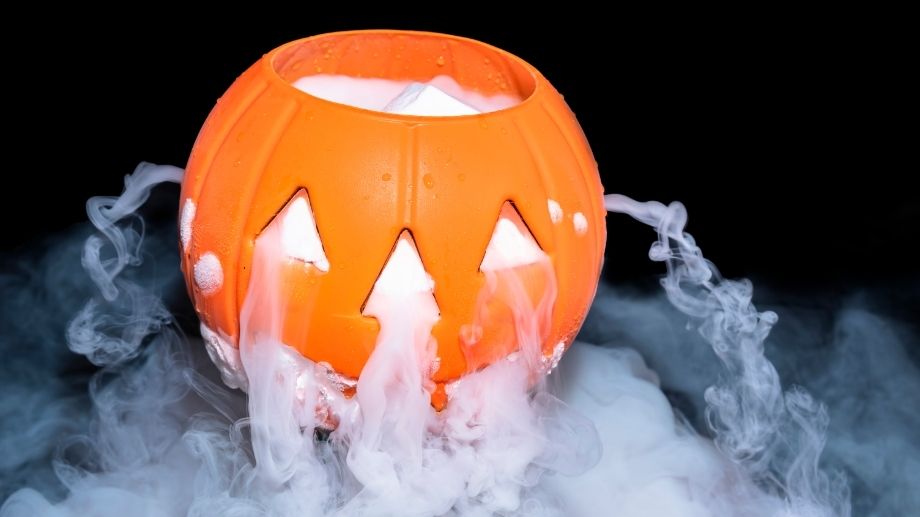
If you even put dry ice in a bucket of warm water or even in a drink you get a thick smoke that appears and sinks down to the floor. But what exactly is the smoke from dry ice made of?
The smoke from dry ice is condensed water vapor from the air. The dry ice is so cold it causes the usually invisible water vapor in the air to condense into a smoke/fog, much like how clouds form. This smoke is colder and denser than air which is why it sinks to the floor.
Over time the smoke will dissipate and go away. The smoke itself is not toxic however excess CO2 in the smoke can reduce oxygen levels leading to asphyxiation so you should always create dry ice smoke in an area that is well venitlated.
Can You Wet Dry Ice?
Dry ice is gets its name from the fact the frozen carbon dioxide turns directly from a solid into a gas. Dry ice will push away any water placed on it. The only way to make wet dry ice is to place it under high pressures.
Can You Make Liquid Dry Ice?
Dry ice is frozen CO2 and at room temperature and at regular atmospheric pressure it turns directly from a solid into a gas a completely skips the liquid phase. But can you make liquid dry ice?
You can make liquid dry ice by placing it under pressure. Liquid dry ice (or CO2) forms at pressures above 5.1 atm (518 kPa) and at temperatures between -56.6ºC/-69.9ºF and 31ºC/87.8ºF. Fire extinguishers keep liquid CO2 at pressures of approximately 55 atm.
Below you can see a phase change chart for CO2 or dry ice and you can see that at regular atmospheric pressure dry ice always wants to be in the form of gas. This is why dry ice turns directly from a solid into a gas.

What Happens If You Put Lava on Dry Ice?
Ever wondered what happened if lava came into contact with dry ice? No me neither but the outcome is very interesting regardless and lucky for us someone has already done this experiement.
If you put lava on dry ice the dry ice rapidly cools the lava causing it to turn solid and the lava makes the dry ice sublimate (or turn to gas) much faster than it would otherwise.
You can see the results of the experiment below:
Is Dry Ice Flammable?
Dry ice is the solid form of CO2 and it is NOT flammable. In fact, liquid CO2 is used in fire extinguishers as a way to displace oxygen which puts out fires.
Does Dry Ice Smell?
Dry ice is the solid form of CO2 and it is colorless and odorless which is why the gas can be dangerous in confined spaces.
What Does Dry Ice Taste Like?
You cannot eat dry ice however dry ice can make water and foods tastes slightly bitter, slightly sour and acidic. Dry ice will lower the pH of water from 7 (neutral) to an acidic pH of approximately 4.5 giving it its sour and acidic taste.
Can Dogs Smell Dry Ice?
Dry ice is solid carbon dioxide that sublimates directly into CO2 gas. The gas is colorless and odorless even to dogs. Dogs cannot smell dry ice and attempting to get them too can lead to asphyxiation of the dog due to the excess CO2 displacing oxygen in the air especially near the ground.
Is It Safe To Put Dry Ice In a Pool?
You may have seen YouTube videos of people pouring dry ice into their pool to make a cool smoke/fog effect. You've then likely seen people jump into the smoking pool but is this actually safe? Is it dangerous to put dry ice in a pool?
Dry ice is safe to put in an outside pool where ventilation is good. 3 people died in Moscow when they swam in an indoor pool with dry ice. Do not directly touch the dry ice in the pool or it can burn your skin and avoid breathing in the fog above the pool as it contains high concentrations of CO2 and can lead to asphyxiation.
To remain safe when swimming in a pool with dry ice I would do the following:
- Never EVER swim in an indoor pool with dry ice – The lack of ventilation leads to a buildup of CO2, displacing the oxygen and causing asphyxiation and even death.
- Don't touch the dry ice in the pool with your bare skin – The dry ice is so cold it will burn you skin in 1-2 seconds and can even cause frostbite. So avoid touching the dry ice.
- Don't breath in the air/fog right on top of the pool – This fog will have high concentrations of CO2 which can displace oxygen and cause asphyxiation. Hold your breath whilst near the pool or breath the air higher off the pool instad.
How Do I Make My Pool Smoke? Spooky Pool Fog
Making your pool smoke or produce a fog is a really cool effect and can be great for parties, especially at halloween. But how do you make your pool smoke?
To make your pool smoke put blocks of dry ice in your pool. The dry ice will sublimate into gas and the gas will cause the moisture in the air above your pool to condense into fog which will sit on top of the water.
Just make sure you tell guests about the dangers of swimming in a pool with lots of dry ice and smoke. Let them know not to touch the dry ice directly with their bare skin and not to breath in the smoke.

